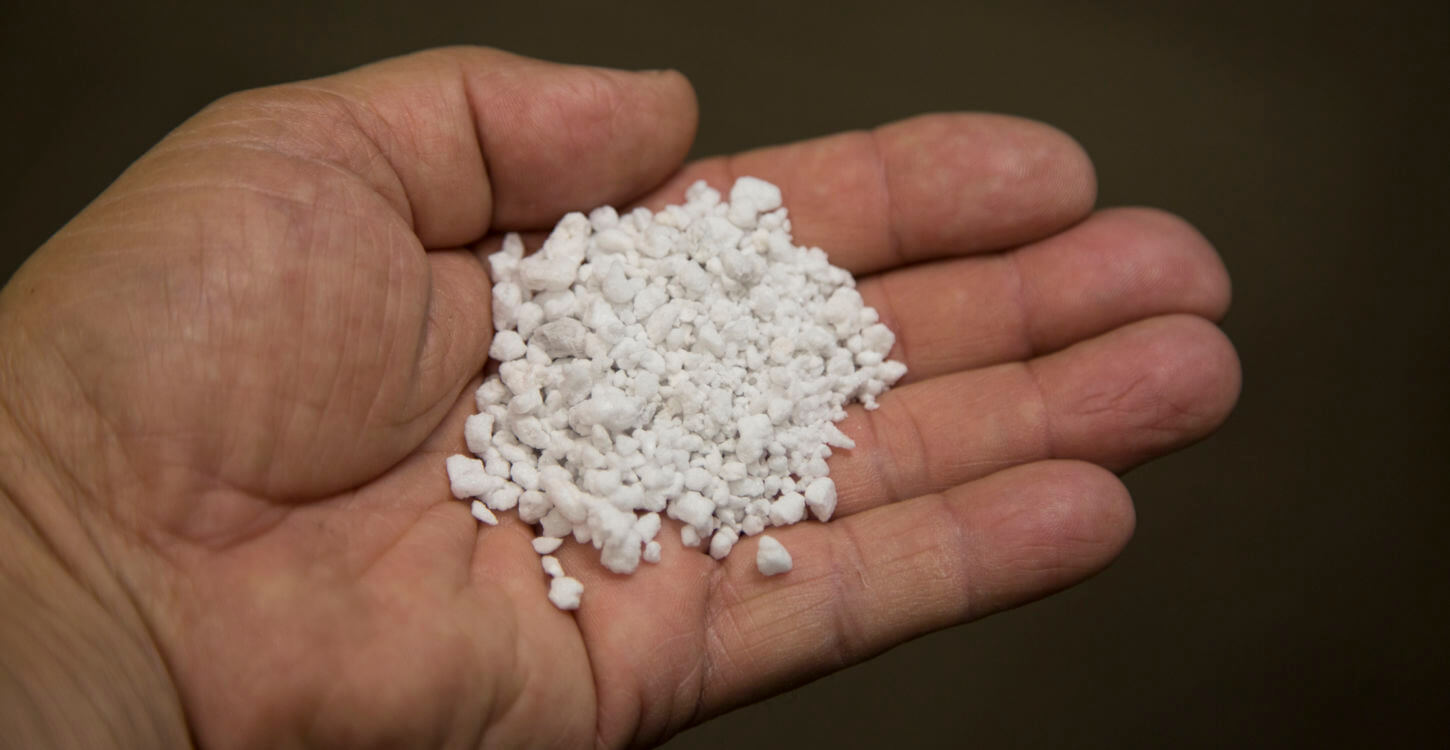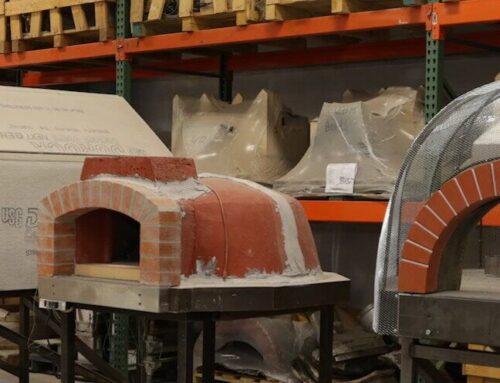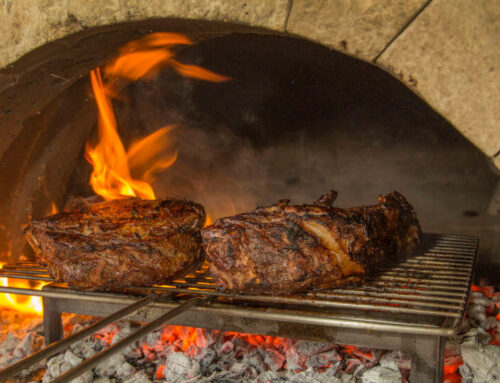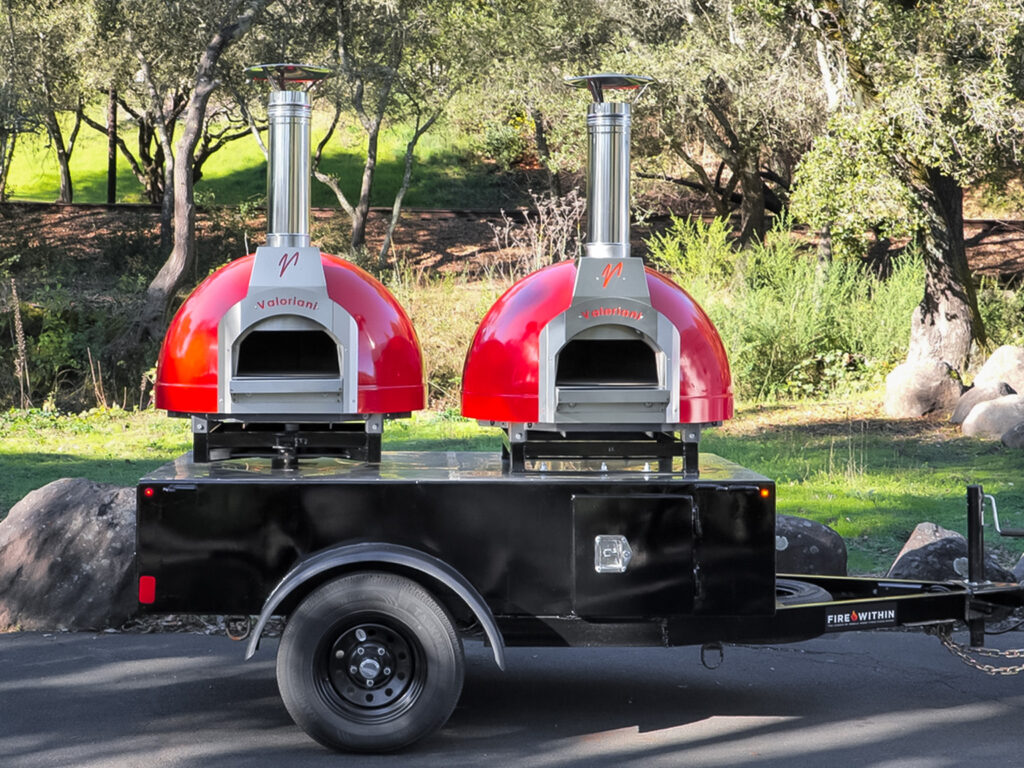What is Perlite and Why do we Use it?
Perlite is the commonly accepted generic term for naturally occurring siliceous volcanic rock. Perlite is not a trademarked name and is typically categorized with vermiculite, another naturally occurring mineral with very similar physical qualities. The Perlite Institute is a worldwide trade association and the source for much of the fact finding in this article.
The perlite we use is actually expanded perlite. The perlite rock gets crushed and super heated until it pops into a small oval that looks like puffed rice. The final product is a pea-sized particle made up of air bubbles.
Perlite facts:
- Perlite is non-combustible with a service temperature of 1800F.
- Perlite is a common insulating material with low thermal conductivity.
- Perlite is very light.
- Perlite will absorb water but retain 100% of its insulating qualities once dry.
- Perlite is rot and vermin proof.
- Perlite is Ph. neutral.
- Perlite is environmentally friendly with no by products or waste.
For wood fired oven construction, we use grade 3 perlite as a source of high-quality lightweight, non-combustible insulation.
Loose-fill Perlite and Perlite Concrete have Completely Different Characteristics
Loose-fill Perlite
Modular pizza ovens are typically wrapped with a high heat fiber blanket that offers reflective insulation. This first layer of insulation helps the oven keep the heat inside but heat migration is inevitable, as the heat will conduct through the floor, arch and chimney. Loose-fill perlite is the perfect companion insulation as it is easily poured over the top of the blanket to fill any gaps and stop the conduction of heat.
The Mugnaini method of oven building isolates the dome and blanket from the outer walls specifically to enhance insulation and to create a stronger, longer lasting structure. By adding approximately 2 inches of loose-fill perlite on the sides and 4-6 inches on the top of the oven, efficiency is increased. Indeed, the tops of our factory-assembled ovens remain cool even after hours of use as no heat migrates through.
Another advantage of burying your pizza oven in perlite is its ability to hold water. Perlite is commonly used in agriculture and potting soils specifically because of this. For the pizza oven the last thing we want is water coming in contact with the dome or floor. Since masonry is porous, water intrusion is always a possibility. If water does migrate into the oven structure via condensation or a structural flaw, it will be absorbed by the perlite first and hopefully never reach the oven components. Any water trapped in the perlite will steam off when the oven is fired.
Perlite Concrete
A common misconception is that perlite mixed with cement will create an insulating concrete. This is really a question of insulators and conductors. It is important to note that perlite concrete should not be used as a structural slab.
While it is true that perlite concrete will insulate more than regular concrete, in practice you will find that perlite concrete will retain heat and offer more thermal mass than it will practical insulation.
Mugnaini commercial ovens utilize perlite concrete placed on top of the insulating blanket and topped with loose-fill as an extra layer of thermal mass. By capturing and storing heat on the cold side of the blanket, start up times are not affected and holding times are increased.
Remember, commercial ovens rarely cool down so the use of perlite concrete is a distinct advantage. But for home use, there is little return on your investment in extra thermal mass.








